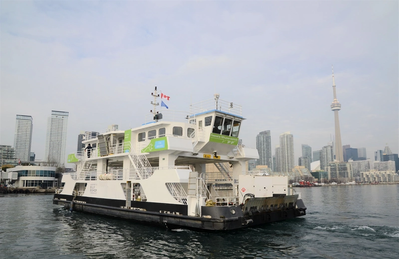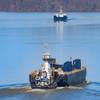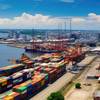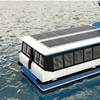Canada’s First All-electric, Zero-emissions Ferry Enters Service
A newly retrofitted electric ferry is the first in Canada to enter service powered by a zero-emissions, lithium-ion power and propulsion system containing no diesel fuel components.
PortsToronto’s 96-foot Marilyn Bell I, used for transporting passengers, vehicles and supplies the short distance to and from Billy Bishop Toronto City Airport on Toronto Island, returned to operations last week following a 20-week conversion, and is now sailing 100% emissions free.
St. Catharines-based marine electrical engineering firm Canal Marine & Industrial Inc. (CANAL) delivered the complete electrification retrofit of the formerly diesel ferry, from conception to installation. The project's naval architect is Quebec-based Concept Naval, and PortsToronto also engaged Nova Scotia-based E.Y.E marine consultants to assist with the implementation of the project.
Originally built by Hike Metal Products in Wheatley, Ont., and in operation since 2010, Marilyn Bell I was previously upgraded to run on biodiesel fuel in 2018 before its diesel generators and engines were removed in 2021 to make way for a new electric power and propulsion system and a suite of lithium-ion batteries. Now fueled by 100% Bullfrog Power renewable sourced energy, the ferry emits zero greenhouse gas (GHG) emissions, reducing the airport's direct GHG emissions by 530 tonnes per year, according to PortsToronto.
The project involved the complete transition of the Marilyn Bell I to CANAL’s ZEROe Power and Propulsion Solution, which includes the CANAL Automatic Shore Charging System (ASCS), said to be the first automatic charging solution for an electric vessel in North America. Charging of the batteries automatically initiates when connected to the ramp on the mainland side and takes only five minutes during loading to top up the charge, CANAL said.
Drawing from the retrofitted 226 kWh Corvus Orca Energy ESS, the new power and propulsion system supports the ferry’s existing operations, carrying up to 15 regular-sized vehicles and 200 passengers at a time seven days a week, 19 hours a day, and four round trips (122 meters each way) every hour.
In total, the ferry conversion cost approximately $3.8 million, paid in full by PortsToronto through the Airport Improvement Fee.
“PortsToronto has made continuous and significant investment to make Billy Bishop Toronto City Airport cleaner, greener and quieter in an effort to create balance between our commercial operations and the surrounding community,” said Geoffrey Wilson, PortsToronto CEO. “With the conversion of the Marilyn Bell to electric power we are ticking all of the boxes in our vision for this airport and its operations. In removing all fuel components of the Marilyn Bell and replacing with lithium-ion batteries we will eliminate all GHG emissions related to the operation of the ferry – Clean. We will power these lithium-ion batteries with 100% Bullfrog Power – Green. And we will significantly reduce the noise associated with ferry operations – Quiet.”
Shawn Balding, CANAL’s general manager and project manager for the Marilyn Bell I, said, “CANAL is proud to offer our clients customized solutions to help transition their operations from traditional energy consumption to low or zero-emission options. We hope to provide answers and solutions to industry in this direction, and help clients meet their greenhouse gas and cost reduction targets.”
Increasingly, hybrid- and all-electric propulsion solutions are gaining interest and being put to use in the maritime sector, especially for vessels like ferries and other workboats that operate on fixed routes with frequent and relatively short trips and docking times.
CANAL said is set to deliver another ZEROe project for Skagit County in Washington State with a newbuild on their Guemes Island route. In comparison to the Marilyn Bell I, this project will deliver over twice the propulsion power, three times the energy storage capacity, and will be equipped with a larger and more powerful Automatic Shore Charging System, the company said.
“We won this contract in competition against the industry’s top OEMs,” Balding said. “Working with trailblazing organizations like PortsToronto and Skagit County gives us the opportunity to continue adapting and scaling our technology to meet the varying needs of the marine industry.”
 (Photo: PortsToronto)
(Photo: PortsToronto)














